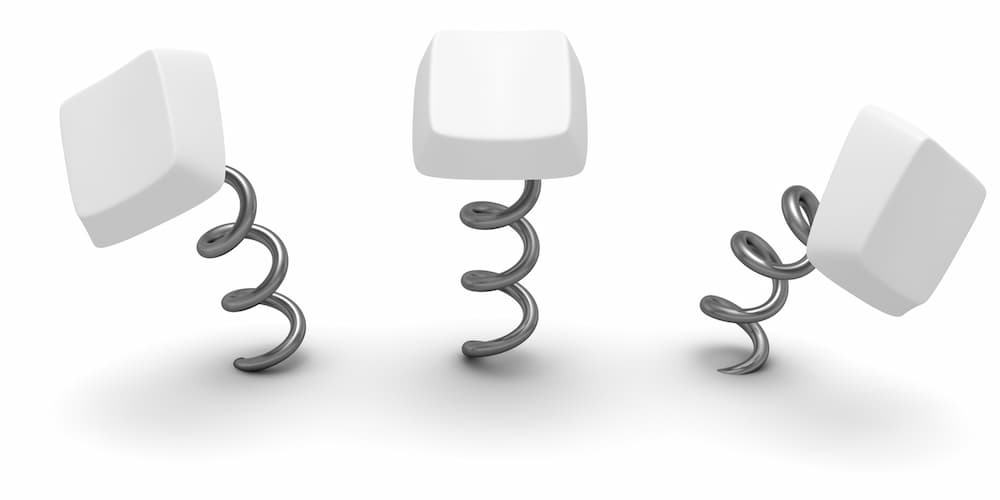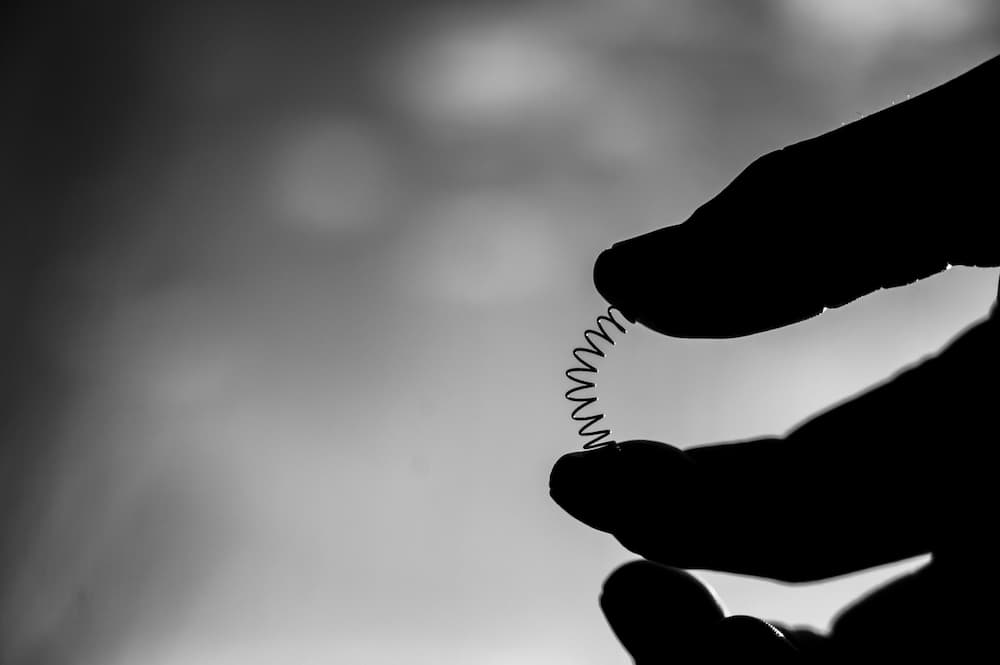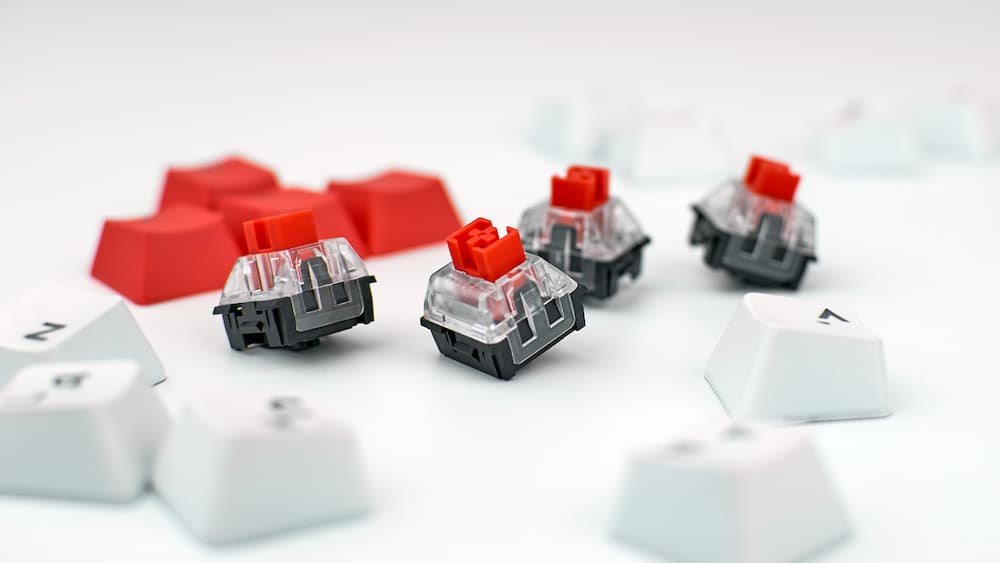Small springs are essential for electronics due to the increasing complexity of these devices. For mechanical computer keyboards, a specific type of small spring is required, a buckling spring.

Isn’t Buckling Bad?
Buckling can happen in other designs of springs unintentionally. Therefore, buckling is also used as a term for when a spring is damaged due to being misused.
During deflection, small compression springs will suffer from buckling or bending when there is instability. This is caused by a high slenderness ratio combined with a lack of stability. As the spring compresses, the coils will tremble and shift, creating load pressure on coils incorrectly and damaging them.
As compression spring manufacturers, our technical team will use the slenderness ratio to determine if a spring design will bend or buckle. This ratio compares the spring’s mean diameter to its length. For example, we know that if a spring is more than three times the mean diameter, the likelihood of buckling dramatically increases.
It is never good for this effect to happen accidentally, but buckling springs are designed to operate effectively under these conditions.

What Is a Buckling Spring?
A buckling spring is a unique spring design commonly used in computer keyboards. This is primarily due to the popularity of IBM’s (International Business Machines Corporation) keyboards that use this spring design.
A buckling spring is a coil spring that is fixed underneath each keycap on the keyboard. In addition, a buckling spring is installed between the keycap and the hammer buckle underneath, creating tactile and auditory feedback that provides a user-friendly method of activating the keyboard connections through the hammer.
There may be confusion on why you would design a spring to buckle. This is an undesirable outcome in most cases, but it is a must for computer keyboards.
The installed buckling spring needs to be compressed in a specifically buckled way as the cap is pressed. This is how the spring triggers the hammer buckle switch below it, alternating between activated input and deactivated.

Why Are Buckling Springs Preferred?
Due to their construction, buckling Spring keyboard caps are generally much taller than the alternatives. This means the user will have to press down harder on the individual keys to get the required input. Despite this extra effort, many typists, writers and video game hobbyists agree that buckling spring keyboards are their preferred choice.
Other keyboard designs, such as laptop and rubber dome keyboards, operate with layers of plastic membranes. These membranes are compressed when a key is pressed until a rubber switch completes a circuit and triggers the input.
These alternate keyboard designs are cheaper to manufacture and can be made surprisingly thin. Laptops commonly use this method to help make them lighter and smaller. Unfortunately, this convenience comes at the cost of a lower-quality product with a shorter life cycle.
Buckling spring keyboards (otherwise known as mechanical keyboards) are incredibly reliable and long-lasting. Once a user adjusts to the increased height, they can easily register that their inputs connect through the satisfying tactile sensation and clicking noise. Mechanical keyboards are usually identified by this pleasing click-clack sound that alternate keyboard designs lack.
Keyboard suppliers will often offer switches that provide different levels of key sensitivity. Unfortunately, this is a level of customisation that is unavailable outside of buckling spring keyboards.

Why Use Springs In Electronics?
Springs are an excellent component for many applications in modern electronics, including computer keyboards. Spring manufacturers will create these vital parts in a range of designs and various materials to provide significant strength, conductivity and resistance.
Keyboard Spring Materials
The design of the spring is but one decision; choosing the suitable material is essential to manufacturing durable keyboard components.
Gold-plated springs are not used for their aesthetics but for their increased corrosion protection. This treatment makes them substantially resistant to issues like spilt liquids. They do, however, have the potential to flake over extended use, which can cause complications.
PVD-coated springs have similar corrosion protection as the gold-plated ones whilst also improving the spring’s resistance to wear and tear. It is perfect for handling the thousands of keystrokes they will be subjected to daily. PVD-coated springs will last a long time but will not perform the same consistently near the end of their lifecycle when they need replacing.
Stainless steel is the default material for many spring designs, including buckling springs. This is because stainless steel can be relied upon as a very predictable spring that will consistently perform the way you intend for a long time without any additional issues arising.
Airedale Springs are the UK’s leading small spring manufacturer. We specialise in providing the highest quality spring, pressing and wire forms for all our client’s electrical products. We also offer custom spring design and manufacturing services.

